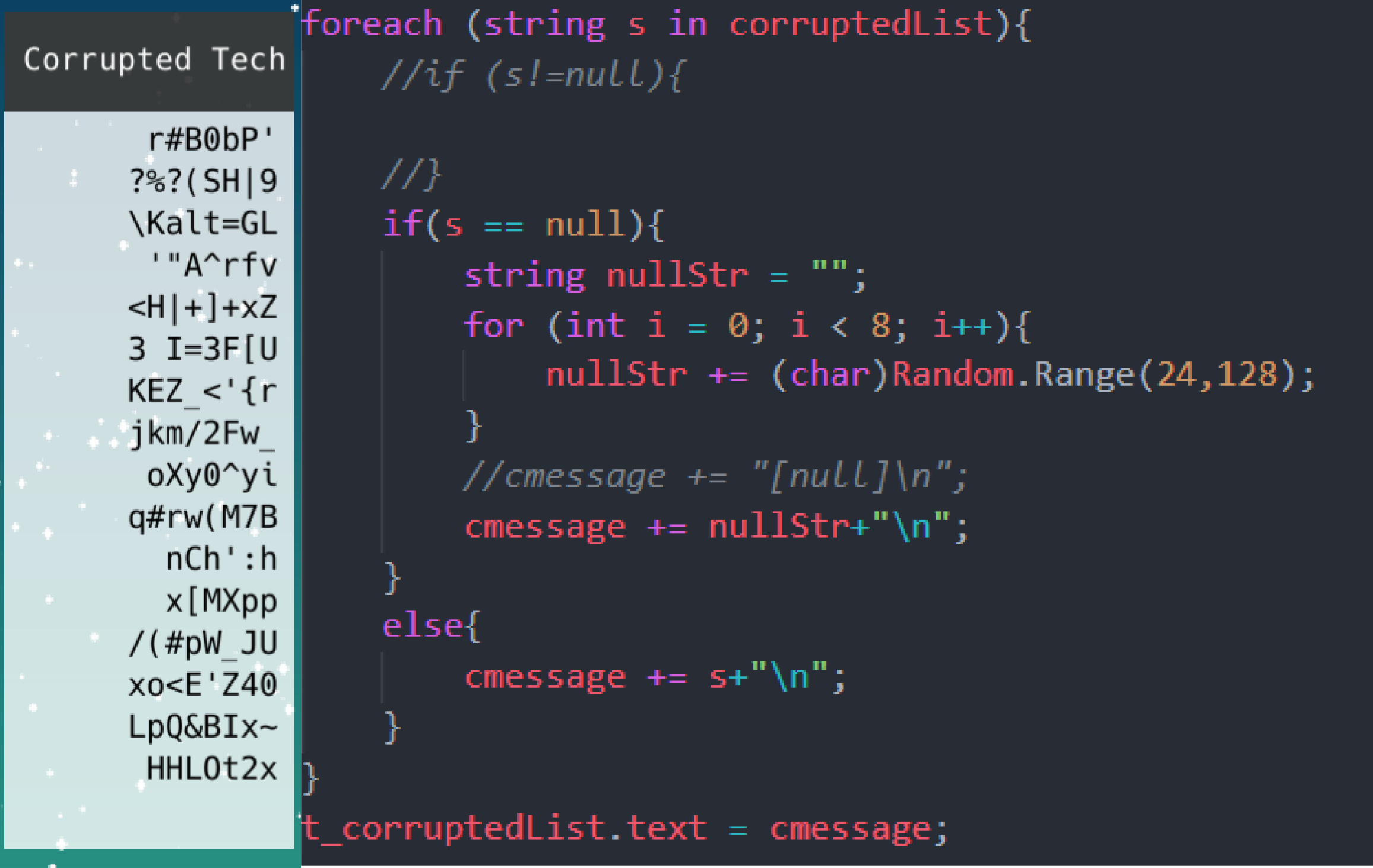Well that was my first game jam and a ton of fun! I built C0RRUPT0R, a simulation-card-game about destroying the world by sabotaging modern technology as it’s being developed, and balancing the finite amount of power you have available to strategically interfere with an automated tech tree.
Video Overview
All in all, it took me about 16 hours to build this - 50% spent in Unity, 25% programming in VS Code, 10% making art in Inkscape and Blender, 10% reading the documentation and 5% composing the background music on the guitar.
You can play it here!
Planning
The idea, at the start, was to make a game about destroying the world, one small step at a time. I tried out a democracy-like option, where you could pose one of two policies (like Nuclear Science vs Gene Editing), and progress down a huge, branching tech tree, and based on how you chose the options and the settings of a few stats of the population (aggressiveness, morality and such), you could end up destroying the world or transitioning it into a utopia.
That turned out to be way too impossible, and though it might’ve been more fun that this game, it’s scoped way to large. So, I reduced the scope:
- Branching tech tree - Linear, 16 step tech tree
- One stat -> LOVE/HATE
- No choices, you can either invest in a technology or pass
- Stats don’t affect choices, no real “simulation” aspect
Mechanics + Art
It turned out that this game ended up being a purely mathematical puzzle (if you can call it that). The difficulty scales in a way that is linear and kind of exponential, and that’s about the extent of the ‘mechanic’.
Despite the intent of the game jam, I was focusing more on aesthetics here than gameplay (which isn’t a great idea, I know, but I spend more time on content than I do usually on mechanics). Inkscape is amazingly versatile for UI design, and it gives a really clean look.

That plus button is actually a plus sign with two rotated hollow squares on top.
I started with this pixelated planet which, if you want to make yourself, you can find my tutorials (the pixel planet one) in the navbar and try it. I ended up kind of building the game around this image because of how amazing I thought it looked.

Also, I made up a relaxing space-y song on the guitar in about 10 minutes to loop in the background. It was amazingly simple to do, and I think it was a good idea because I’ve never made the music for my games before.
The guitar audio loop!
This panel shows random characters, until you unlock technologies in which case they show up instead of the random strings.

First time using the Foreach loop.
The math behind all this is pretty simple, and I modelled it off of a game I love (Fallen London, at fallenlondon.com). It looks like this:

Where that probability (78% chance of success) scales with the number of power you have relative to the cost - Right now that ratio is 1:1, so it’s given a hardcoded value of 0.78 chance of success.
For reference, Fallen London looks like this:

Which I think looks pretty similar.
Conclusions and Moving Forward
That was a lot of fun! I really enjoyed making that game and having something to work on with that much concentration for a short burst of time. I’m glad I managed to finish and submit it (I got around 400th place out of like 2700 submissions which isn’t terrible ).
Next time though, I think I need to work on my planning skills. I built the graphics and audio assets first, and added content and mechanics on top of that, which I’m starting to realize is a bad way to make games in general. It makes for content-heavy, and uninteresting if pretty to look at games. I really need to find another project, one that’s more mechanically interesting and build from a strong core mechanic, rather than lean on the art.
Thanks for reading my post, and I hope I’ve convinced you to try out a game jam sometime! It’s a worthwhile experience and you’ll learn a lot from it. Thanks to GMTK’s Mark Brown for hosting this game jam!